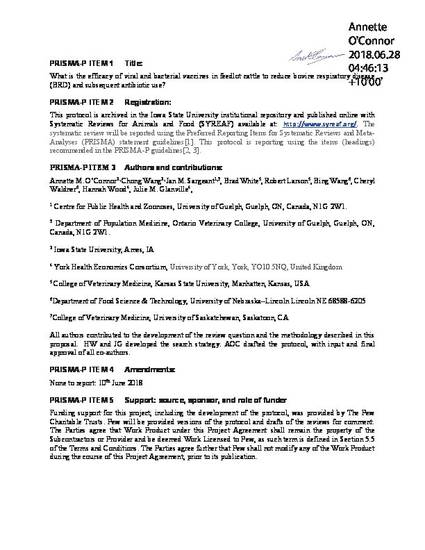
Bovine respiratory disease complex is the most economically significant disease of feedlot cattle[4]. Putative causal organisms include Mannheimia haemolytica, Pasteurella multocida, Histophilus somni and Mycoplasma bovis, bovine herpesvirus, bovine viral diarrhea virus, bovine respiratory syncytial virus, and parainfluenza type 3 virus[5].
Vaccination against the putative causal organisms is a frequently used approach to aid in the prevention of BRD. With a more significant concern for prudent antibiotic use in the beef industry, it is vital that decision making with regards BRDC management be based on an understanding of the efficacy of vaccination programs and management factors that might modify the efficacy of the preventive management practice[6, 7]. Systematic reviews of randomized controlled trials yield the highest level of evidence for the efficacy of treatment under field conditions, and comparative efficacy can be examined using network meta-analysis for multiple comparisons. Establishing the efficacy of monovalent and polyvalent vaccinations for the prevention of BRDC in feedlot cattle will serve to improve decision makers’ ability to engage in effective stewardship of antibiotics.
Available at: http://works.bepress.com/annette_oconnor/85/
